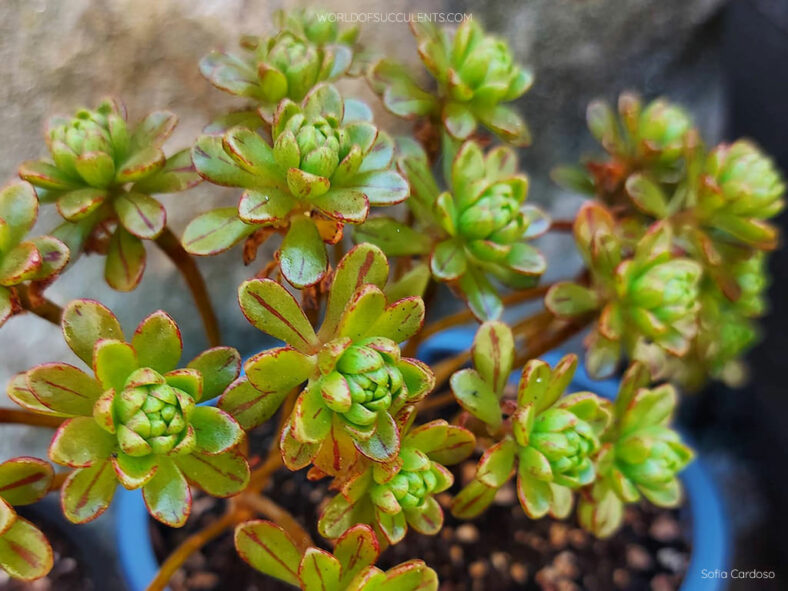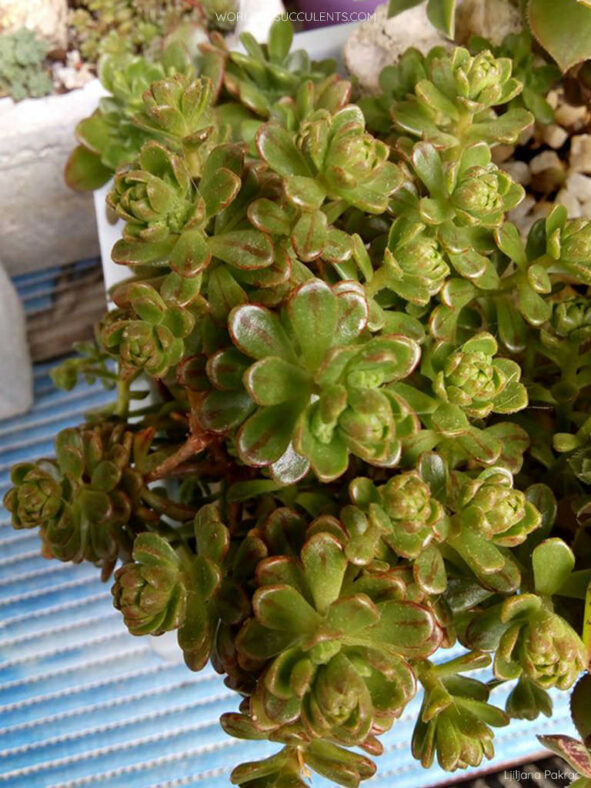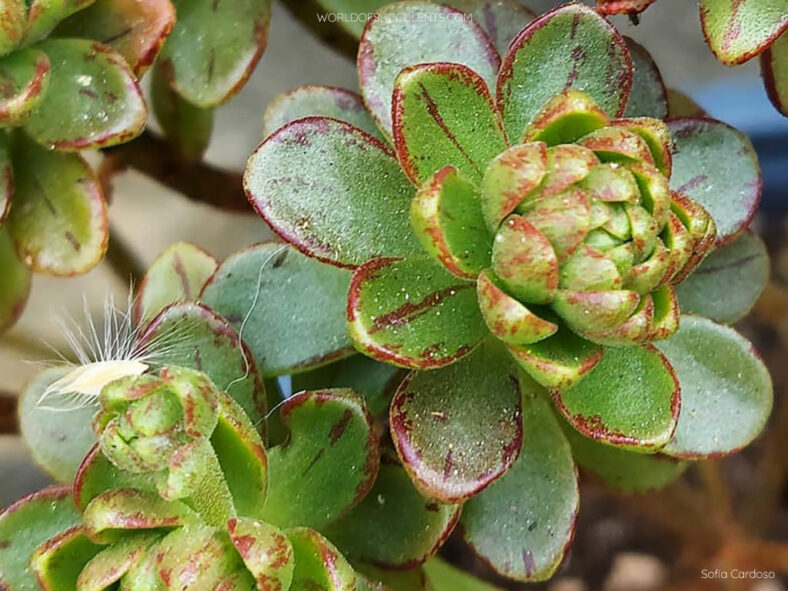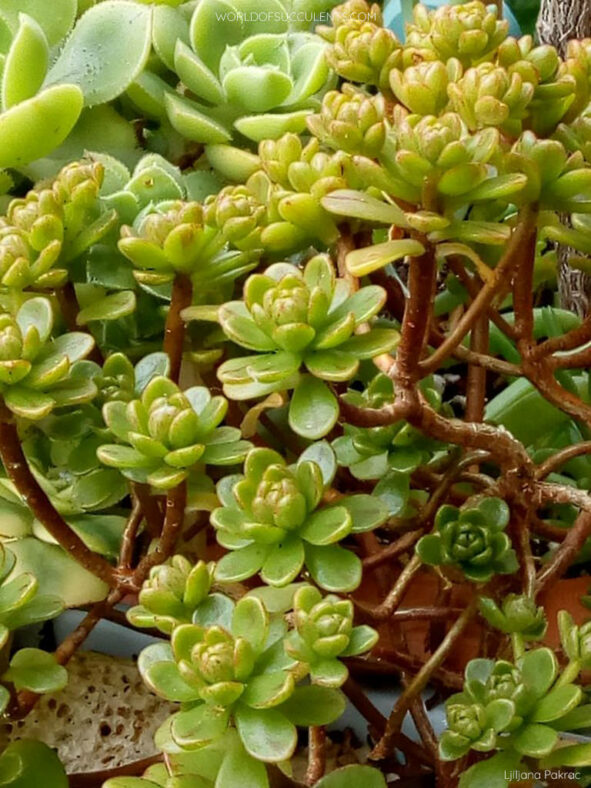Aeonium ×loartei is often confused with Aeonium sedifolium. However, they can be distinguished by the shape of their leaves. The leaves of Aeonium sedifolium are almost cylindrical or slightly tapering, while those of Aeonium ×loartei are flat on the upper surface.
Scientific Name
Aeonium ×loartei
Synonym(s)
Aeonium ×casanovense
Scientific Classification
Family: Crassulaceae
Subfamily: Sempervivoideae
Tribe: Aeonieae
Genus: Aeonium
Etymology
The specific epithet "loartei" (pronounced LOAR-tee-eye) honors Felix Loarte Garcia, a Spanish Aeonium lover.
Origin
Aeonium ×loartei is a natural hybrid native to the Canary Islands (Tenerife). It results from a cross between Aeonium sedifolium and Aeonium spathulatum.
Description
Aeonium ×loartei, also known as Aeonium ×casanovense, is a small, much-branched succulent shrub with small leaves arranged in attractive rosettes at the end of the branches. It can grow up to 10 inches (25 cm) tall, resembling both parents. The rosettes can reach a diameter of up to 0.8 inches (2 cm). The leaves are spoon-shaped, green with strong red markings, measuring up to 0.5 inches (1.2 cm) long and 0.25 inches (0.65 cm) wide.
In spring, Aeonium ×loartei produces star-shaped flowers with usually 12 or sometimes 11 yellow petals. The flowers appear in dense clusters on leafy stalks.
Aeonium ×loartei is also distributed under the invalid name Aeonium ×arnoldii.

How to Grow and Care for Aeonium ×loartei
Light: Aeonium ×loartei thrives in full sun to partial shade, but in summer, light shade may be necessary, especially during the hotter afternoon hours. When growing indoors, ensure it receives as much bright indirect light as possible to prevent the plant from becoming leggy and stretched.
Soil: Unlike most succulents, this plant requires a sandy loam or regular potting soil amended with perlite. Avoid placing it in premade soil mixes designed for succulents since it needs more moisture than they typically provide.
Temperature: Aeonium ×loartei does not like hot or dry weather, so it may go dormant in summer. It grows best in USDA Plant Hardiness Zones 10a to 11b, with average minimum winter temperatures ranging from 30 to 50 °F (-1.1 to 10 °C).
Watering: Water the plant thoroughly in spring and fall, allowing the soil to dry before watering again. During the winter, water it more sparingly. Although this plant requires more water than most succulents, too much moisture can lead to root rot. During its dormancy in summer, stop watering except in arid conditions.
Fertilizing: To stimulate growth and improve the plant's appearance, apply a water-soluble fertilizer diluted to half the recommended strength only during the growing season.
Repotting: If growing Aeonium ×loartei in a container, repot it every two to three years during the spring. Choose a container with drainage holes to prevent root rot.
Propagation: This plant is easy to propagate by stem cuttings. Take cuttings during the growing season and allow the cut end to dry for several days before planting.
Learn more at How to Grow and Care for Aeonium.
Toxicity of Aeonium ×loartei
Aeonium ×loartei is considered non-toxic, so it is safe for growing around children and pets.
Links
- Back to genus Aeonium
- Succupedia: Browse succulents by Scientific Name, Common Name, Genus, Family, USDA Hardiness Zone, Origin, or cacti by Genus
Photo Gallery
Click on a photo to see a larger version.


